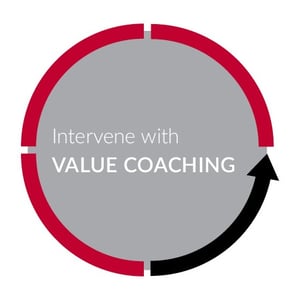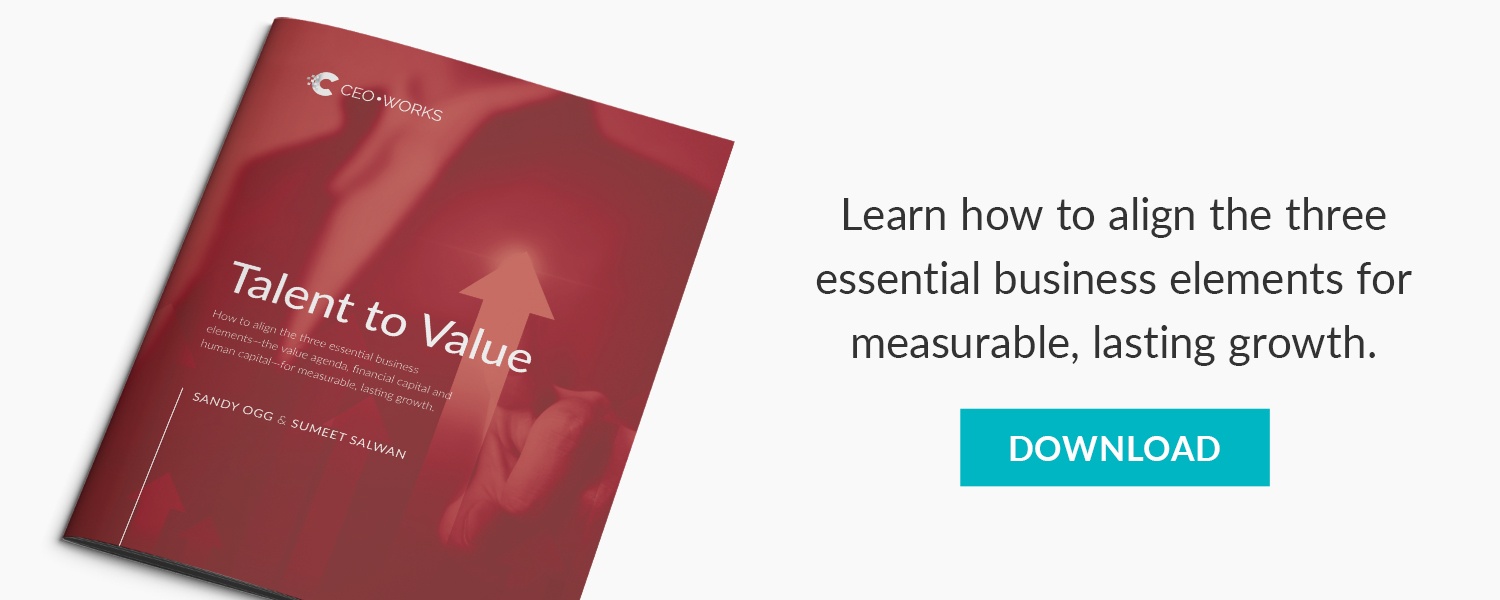Welcome to the final part of our Connecting Talent to Value series.
Now that the value has been identified, the roles have been determined, the right talent placed in those roles and we've factored in the risks, it's important to remember that our work is not yet complete. Value Coaching is an ongoing process that requires adjustments along the way in order to generate and maintain an upward trajectory.

Interventions for Maximum Growth

After a rigorous assessment of the role•talent™ risks in our Blackstone experiment, it became obvious to us where and what interventions were necessary. To minimize value at risk, we had to deal with the red and amber role•talent combinations. To optimize value creation, we had to take every opportunity to be creative with our ultraviolets.
We also noticed, over time, that sometimes the jobs we needed done morphed and changed and the roles we had so carefully designed no longer lined up neatly with value creation. Other times, a role•talent we had assessed as green started to turn amber or red for some inexplicable reason.
All these situations called for an appropriate set of interventions to improve results, reduce risk, and capitalize on opportunities. Specifically, interventions designed to coach the value into existence through the role•talent combinations we had.
This “value coaching” is not the same as executive coaching.
Executive coaching focuses exclusively on the talent. The objective: improve company performance through individual transformation. When called upon, executive coaches essentially intervene with individual leaders to effectively shift their perspective, adapt their behaviors and, ultimately, improve the results of those they lead.
Value coaching, on the other hand, focuses on the role•talent. What we’re trying to do is coach people to deliver in a particular role. Coaching the combination is how you bend the value curve, one role at a time. Value coaches proactively intervene at the points of risk in the organization, those red, amber, and sometimes green, even ultraviolet role•talent combinations identified in the risk assessment map. At each point of risk or opportunity, the issue may be either the talent or the role. Sometimes it is both the talent and the role. The value coach, therefore, has two points of leverage: the coach can either work with the role and/or with the talent. Interventions in the role can encompass anything from updating the role’s decision rights to changing the jobs to be done; interventions with the talent can cover anything from developing self-awareness and improving communication skills to arranging for job assignments to gain relevant experience.
One last interesting observation. After coaching a series of these role•talent combinations, recurring patterns in the challenges your talented people face may emerge. These patterns can reveal systemic problems, things that have nothing to do with the roles or the talent you have and everything to do with the business model or the organization’s design. For these, you need the guidance of a master value coach.
Connecting talent to value is not a once-and-done exercise. In a world where disruption is the norm, there are many forces at play that are beyond anyone’s control. Value agendas and talent strategies sometimes have to change overnight, testing everyone’s ability to implement change fast. We can prepare our organizations for some of this disruption by developing a pipeline of talented people who demonstrate what we anticipate will be baseline role requirements in the future. For example, it’s clear that many companies will need leaders who are comfortable with diversity, adept at cross-functional integration, agile at navigating change, and fluent with digital technology and analytics. We can also create contexts to nurture fast-moving innovation and allow talented creatives to thrive.
But the real test will be when new sources of value show up in front of us. We now know there’s a way to respond and make a corresponding shift in talent priorities to mine that value fast enough. The question is, will we?


